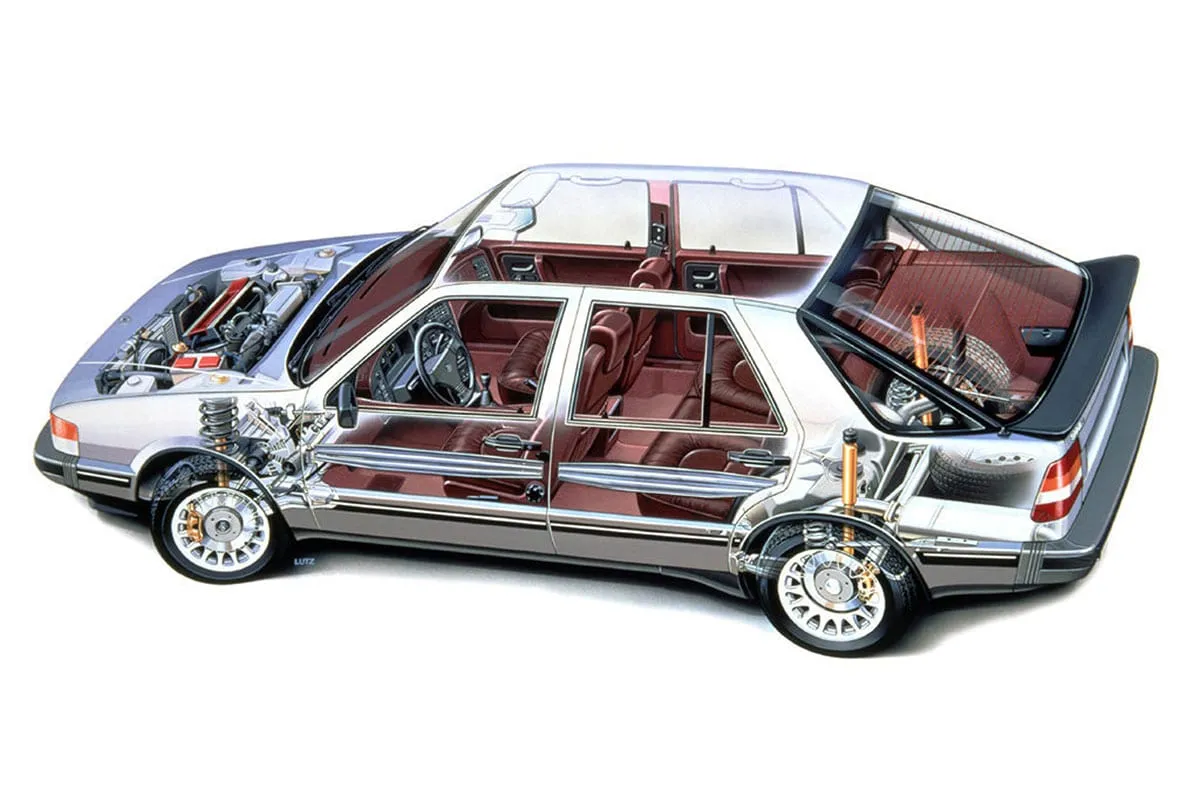The automotive world is full of sleek sports cars, rugged SUVs, and sensible sedans. But then there are those cars that defy categorization, those that march to the beat of their own drum (or perhaps, the whir of their turbocharged engine). The Saab 9000 is one such car.
This Swedish oddball, with its quirky design and unconventional features, might not have achieved mainstream success, but it has earned a dedicated following among those who appreciate its unique charm. In this article, we’ll delve into the world of the 1995 Saab 9000, exploring its history, its quirks, and why it remains a cult classic to this day.
A Swedish Icon with Italian Roots
The Saab 9000, launched in 1984, was a significant departure for the Swedish automaker. It was their first foray into the executive car segment, aiming to compete with established players like the BMW 5 Series and Audi 100. Interestingly, the 9000 shared its platform with the Alfa Romeo 164, a product of a collaboration between Saab and Fiat.
This unusual partnership resulted in a car that blended Scandinavian practicality with a touch of Italian flair. The 9000 was praised for its spacious interior, comfortable ride, and impressive safety features, including standard anti-lock brakes and optional traction control.
The Power of Choice: Turbocharged Thrills or V6 Smoothness
Under the hood, the 1995 Saab 9000 offered a choice between two distinct powerplants. Enthusiasts gravitated towards the turbocharged 2.3-liter four-cylinder engine, available in various states of tune. The range-topping Aero model boasted an impressive 225 horsepower, delivering spirited performance that belied the car’s executive car aspirations.
For those seeking a more refined experience, Saab offered a 210-horsepower V6 engine sourced from GM Europe. This 54-degree V6, known for its smooth power delivery, was a testament to the growing influence of General Motors, which had acquired a 50% stake in Saab in 1989.
A Hatchback in Disguise: Practicality Meets Unconventional Style
One of the most distinctive features of the Saab 9000 was its hatchback body style. While not a common choice in the executive car segment, the hatchback design provided impressive cargo space and versatility. However, for those who preferred a more traditional look, Saab also offered the 9000 in a sedan body style, albeit only with the V6 engine.
 Saab 9000 cutaway view
Saab 9000 cutaway view
The Saab 9000’s hatchback design offered impressive practicality and versatility.
Quirks and Oddities: Embracing Saab’s Eccentricity
The Saab 9000 was not without its quirks. The ignition, located on the center console, a Saab tradition, often baffled first-time drivers. The car’s styling, while distinctive, was also polarizing, with some finding it handsome, while others deemed it awkward.
However, these quirks were part of what made the Saab 9000 so endearing. It didn’t conform to the norms of its segment, instead choosing to chart its own path, much like the independent-minded individuals who were drawn to it.
A Lasting Legacy: The Saab 9000 Today
Today, the Saab 9000 is a rare sight on the roads. Its quirky charm and unconventional design have made it a cult classic, sought after by enthusiasts who appreciate its unique blend of practicality, performance, and Scandinavian eccentricity.
While Saab may no longer be in operation, the 9000 serves as a reminder of the automaker’s innovative spirit and willingness to break with convention. It’s a car that continues to spark conversations and turn heads, proving that sometimes, it’s good to be different.
Conclusion: A Testament to Individuality
The 1995 Saab 9000 may not have been the most conventionally attractive or commercially successful car of its time. However, its blend of practicality, performance, and unconventional design made it a truly unique offering in the executive car segment. Like a well-worn leather jacket or a vintage record player, the 9000 has aged gracefully, its quirks only adding to its appeal. It stands as a testament to Saab’s legacy of innovation and individuality, a car that dared to be different and, in doing so, carved out a special place in automotive history.